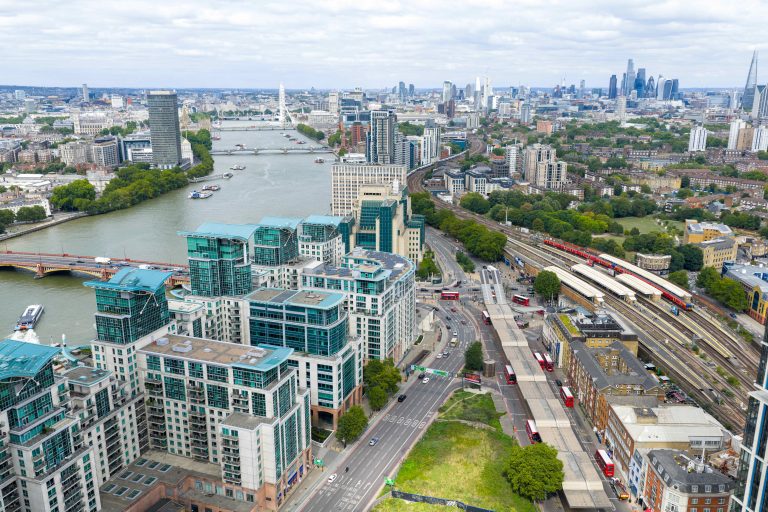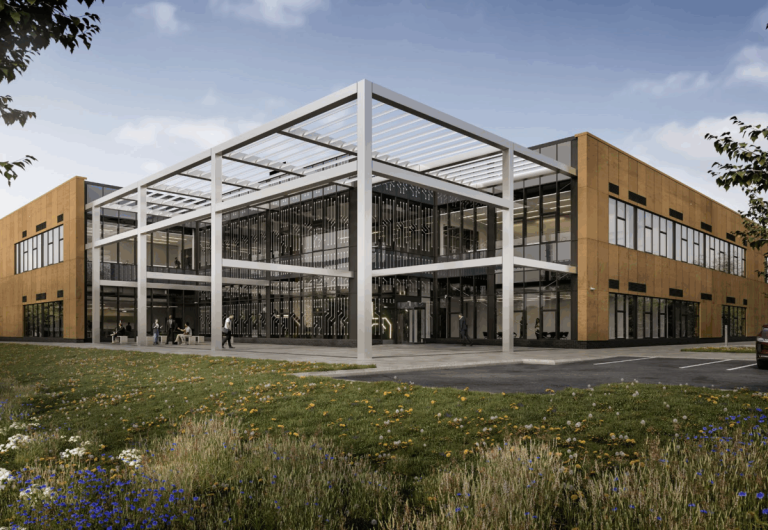Unlocking one of London’s largest and most connected new waterfront neighbourhoods… Arada, the UAE’s fastest-growing master developer, announces that it has agreed the acquisition of an 80% stake in Thameside West, a landmark waterfront mixed-use development located at the western end of London’s Royal Docks. Master-planned by Foster + Partners, the vibrant new urban destination will deliver at least 5,000 homes, with half of the site dedicated to green space and a kilometre of active waterfront. Boasting unrivalled transport links, the integration of air, road, rail, river and tunnel links makes this one of the most connected sites in London. Spread over a 47-acre area – twice the size of the Hudson Yards mixed-use development in New York – Thameside West represents one of Europe’s largest and most strategically important regeneration opportunities, with a Gross Development Value (GDV) of £2.5 billion. It occupies central London’s longest stretch of undeveloped riverfront, with views across Canary Wharf and Greenwich Peninsula. Already awarded consent, Thameside West will see 1,000 homes delivered in the first stage of the project, with construction set to begin in 2027. The acquisition from private developer Keystone represents Arada’s second large-scale investment in the London residential market in the space of less than two months, following its purchase of local developer Regal in September. Arada will work alongside the London Borough of Newham, Greater London Authority and Transport for London to transform this former industrial site into a vibrant, new neighbourhood. Keystone’s vision and sustained commitment have been instrumental in progressing Thameside West to this stage, laying the foundations for one of London’s most ambitious masterplans. GLA Land and Property Limited (“GLAP”), as the other major landowner, will work closely with Arada to unlock this significant project. Thameside West is one of the most well-connected sites in London and benefits from the recently completed Silvertown Tunnel, Custom House station (Elizabeth, Jubilee and Docklands Light Railway (DLR) lines), City Airport, and the IFS Cable Car. The site also connects the Lea Valley Regeneration Area and the wider Royal Docks, and Arada aims to additionally deliver a new DLR station, in partnership with Transport for London. His Highness Sheikh Sultan bin Ahmed Al Qasimi, Chairman of Arada, said: “Our entry into this market was grounded in our unwavering faith in London and its attractiveness as one of the world’s leading capital cities. At the time of the Regal acquisition, we articulated our ambition to scale our London residential pipeline to 30,000 units over the next three years, and we have swiftly delivered on growing that pipeline. Thameside West represents a unique opportunity to create a landmark riverside development, and we look forward to working with our partners and utilising our long-standing track record in large-scale, amenity rich residential schemes to unlock the delivery of new housing for London.” Tom Copley, Deputy Mayor for Housing and Residential Development said: “I am delighted that Arada is investing in London to transform Thameside West – one of the key sites within the Royal Docks. This really is a fantastic example of how we can unlock London’s potential to deliver the homes our city so urgently needs. “Working together we will be able to deliver at least 5,000 new homes, 35 per cent of which will be affordable as part of a thriving new neighbourhood in the heart of this historic part of East London. “This is a landmark moment as we continue to push ahead with our plans to return the Royal Docks to its former glory and create a better, fairer, greener London for everyone.” Lord Norman Foster of Thamesbank, Founder and Executive Chairman of Foster + Partners, said: “Thameside West is a place where architecture, nature and infrastructure come together in balance. The stepped design ensures exceptional views from every building, while the integration of air, road, rail, river and tunnel links makes this one of the most connected sites in London. Half the master plan is dedicated to green space, including more than a thousand trees and a kilometre of active waterfront, creating a setting that is both restorative and dynamic. Our goal is to build a truly inclusive community – one that brings opportunity, sustainability and vitality to the heart of London.” Giorgio L. Laurenti, Chairman of Keystone, said: “One of the most significant development opportunities in Greater London, Thameside West is a transformational destination designed to deliver thousands of new homes while generating substantial economic and social value for the wider community. With Arada, we have found an ideal and trusted partner, with tried-and-tested experience in large-scale urban mixed-use districts, to work with as we move closer to bringing this landmark project to life.” The acquisition of Thameside West increases Arada’s London development pipeline to 15,000 homes, supporting its ambition to triple this to 30,000 units over the next three years, building on a 30-year track record in the capital’s real estate market. Building, Design & Construction Magazine | The Choice of Industry Professionals










